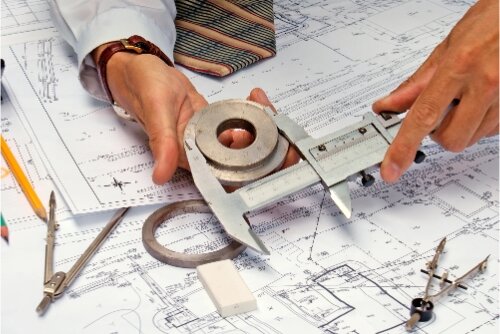Metal fabrication projects often hit roadblocks due to improper cutting techniques, wasted materials, and safety hazards. With the right methods and tools, sheet metal cutting becomes precise, efficient, and safe – saving both time and resources.
Sheet metal cutting requires specific tools and techniques for different materials and thicknesses. From manual snips to power shears and plasma cutters, each method serves unique purposes in achieving clean, accurate cuts.
Want to master professional-grade sheet metal cutting? Let’s explore proven methods that deliver superior results.
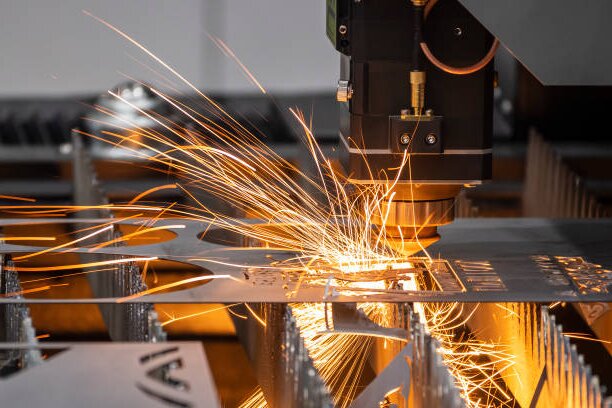
What is Sheet Metal Cutting?
Sheet metal cutting transforms flat metal sheets into specific parts or components. It requires precise material removal to achieve the desired shapes and dimensions.
From simple straight cuts to complex geometric patterns, sheet metal cutting serves diverse manufacturing requirements. Each project demands specific techniques and tools to ensure optimal results.
Modern sheet metal cutting combines traditional craftsmanship with advanced technology. Manufacturers can choose from manual methods to automated systems. This flexibility allows for both small-scale projects and high-volume production runs.
The success of sheet metal cutting relies on two key factors: precision and control. The proper technique ensures clean cuts without material waste. Skilled operators must understand both the tools and materials to achieve professional results.
How to Cut Sheet Metal?
The sheet metal cutting process starts with careful preparation. First, select the appropriate metal material for your project. Then, determine the exact shape and dimensions needed for your final product.
Choose your metal sheet based on project requirements. Consider factors like thickness, material type, and surface finish. Mark your cutting lines clearly on the material. Ensure all measurements are double-checked before cutting begins.
Choosing the Right Cutting Method
Traditional Methods
- Shearing works best for straight cuts on thin sheets
- Manual snips provide control for small, detailed work
- Circular saws deliver clean cuts on thicker materials
Advanced Techniques
- Laser cutting offers precision for complex patterns
- Water jet cutting prevents heat distortion
- Plasma cutting excels with thick materials
Key Considerations
The success of your cut depends on several factors:
- Sheet thickness determines tool selection
- Cutting speed affects finish quality
- Metal type influences method choice
- Tool condition impacts cutting precision
Monitor your cutting speed throughout the process. Adjust settings based on material feedback. Keep tools properly maintained for optimal performance. Check cut quality frequently during operation.
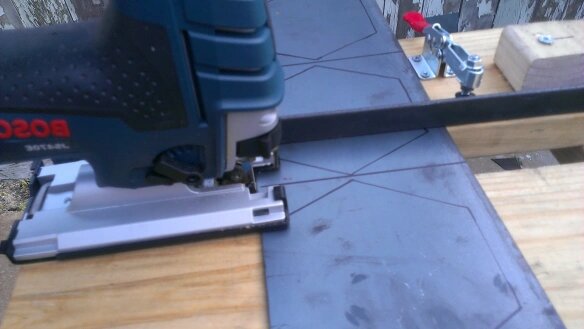
Sheet Metal Cutting Methods: An Overview
Modern sheet metal fabrication relies on diverse cutting techniques. Each method brings unique capabilities and advantages to different manufacturing challenges.
Shearing
Shearing is a fundamental metal-cutting process that uses mechanical force to make straight cuts through sheet metal. This method employs shear force between two blades to separate the material cleanly.
Shearing offers precise, clean cuts and high efficiency in production settings. It excels in speed and minimizes material waste. However, it’s limited to straight cuts and specific material thicknesses.
Laser Cutting
Laser cutting uses a focused high-energy beam to melt, vaporize, or ablate material. The process creates rapid, high-temperature heating at a single spot, allowing for precise material removal.
Laser cutting provides high precision, unlimited 2D complexity, and compatibility with various materials. However, it has limitations in material thickness and can produce toxic fumes with certain materials.
Plasma Cutting
Plasma cutting uses an electric arc to create ionized gas at temperatures over 20,000°C, melting and expelling material from the cut. This process works specifically with electrically conductive materials.
Plasma cutting excels at cutting medium-thickness materials up to 50mm and offers faster cutting speeds than oxyfuel. It’s particularly effective for cutting stainless steel and aluminum.
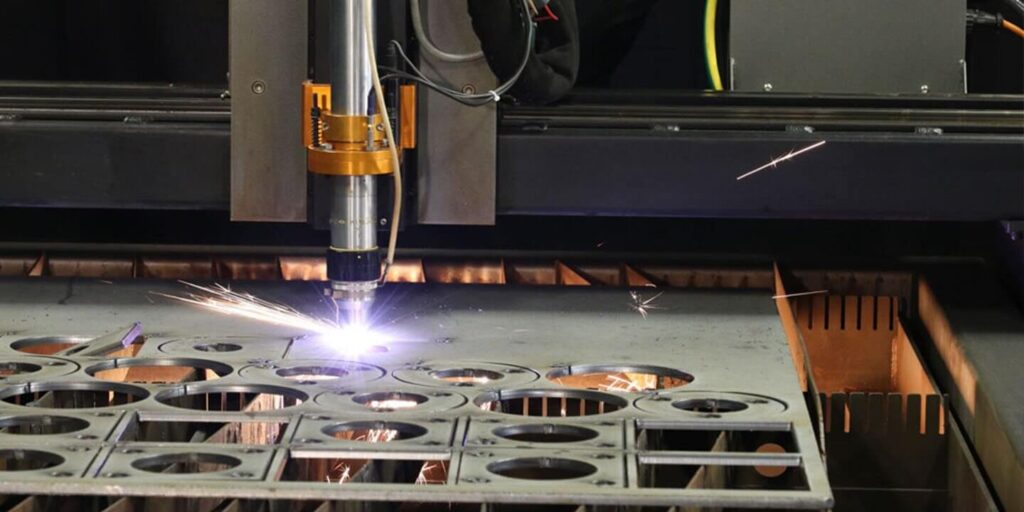
Waterjet Cutting
Waterjet cutting uses ultra-high pressure water (30,000-90,000 psi), often mixed with abrasive materials, to cut through various materials. This cold-cutting process prevents heat-affected zones.
Waterjet cutting provides superior edge quality and can cut multiple layers simultaneously through stacking. It has no thickness limitations and offers excellent accuracy with low cutting tolerances.
CNC Cutting
CNC cutting uses computer-controlled automation to guide cutting tools with precise movements. This technology relies on programmed instructions to create complex shapes and patterns.
CNC machines deliver unparalleled precision and consistency in production. They maintain tight tolerances and can operate continuously while minimizing human error.
Which Are Some of The Most Popular Metals Used for Sheet Metal Cutting?
Sheet metal fabrication relies on specific materials to meet diverse manufacturing needs. Each metal offers unique properties that suit different applications. Here are some common materials used for cutting sheet metal:
- Aluminum
- Stainless Steel
- Carbon Steel
- Copper
- Brass
The choice of metal depends on specific project requirements, including strength needs, environmental conditions, and cost considerations.
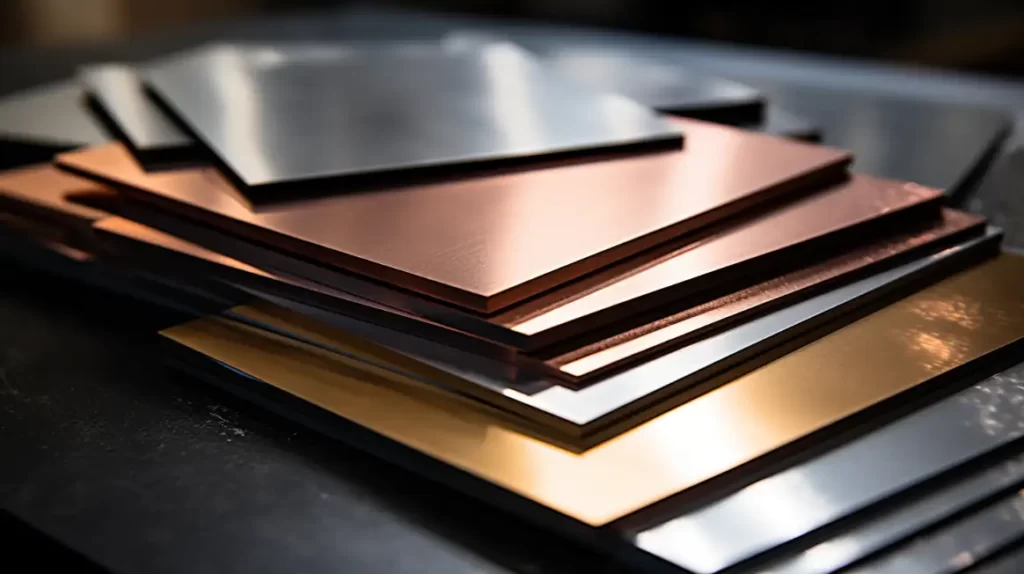
What are the Main Parameters in the Sheet Metal Cutting Process?
Sheet metal cutting success depends on precise control of multiple parameters. These factors work together to determine the quality and efficiency of cuts.
Material Thickness
Material thickness directly impacts cutting force requirements and method selection. Thicker materials need more robust cutting techniques and often require slower processing speeds. For example, a 1.5kW laser can cut through 5mm stainless steel, while 12mm requires 4.5kW power.
Cutting Speed
The rate of tool movement across materials significantly affects both productivity and cut quality. Higher speeds improve cut quality but must balance with material thickness and power settings. Optimal speed prevents material burning while ensuring complete cuts.
Power Output (for Laser/Plasma Cutting)
Power settings determine cutting capability and precision:
- Higher power handles thicker materials
- Lower power suits thin, delicate work
- Power must match material properties to prevent damage
Cutting Tolerances
Modern cutting systems achieve impressive precision:
- Laser cutters: ±0.0005 inches
- Standard shearing: ±0.01 inches
- Waterjet cutting: ±0.003 inches
Surface Finish
Surface quality affects both process and results:
- Smoother initial surfaces produce better cuts
- The surface must be free from rust and contamination
- Cut quality depends on proper speed and focus settings
These parameters require careful adjustment based on specific project requirements. Proper balance ensures optimal results in metal fabrication.
Cutting Techniques and Best Practices
Cutting sheet metal requires precision, the right tools, and proper techniques to achieve clean and accurate results. Below is a breakdown of effective methods and tips for various cutting challenges.
How to Cut Straight Lines with Precision?
Achieving straight cuts starts with marking clear guidelines on the sheet metal using a scribe or marker. Use tools like shears, tin snips, or a straightedge guide with a circular saw for long cuts.
Cutting Curves and Complex Shapes
For curved or intricate designs, tools like jigsaws, bandsaws with fine-tooth blades, or piercing saws are ideal. Mark the pattern clearly on the metal and cut conservatively on the waste side of the line.
Techniques for Cutting Thick Sheet Metal
Thicker sheets require robust equipment like plasma cutters, oxy-fuel torches, or heavy-duty shears. Adjust power settings based on material thickness to prevent incomplete cuts or overheating.
Tips for Reducing Burrs and Rough Edges
To minimize burrs, use sharp cutting tools and maintain consistent cutting pressure. Deburr edges with a file, grinder, or deburring tool immediately after cutting.
How to Handle Heat and Fumes During Cutting?
Work in a well-ventilated area and use fume extractors to remove airborne particles. Wear protective gear such as gloves, goggles, and respirators to safeguard against burns and inhalation hazards.
Conclusion
Sheet metal cutting combines technical precision with practical application skills. The success of your sheet metal project depends on choosing the right combination of material, method, and tools. Whether you’re working with aluminum, stainless steel, or copper, the proper technique ensures optimal results.
Ready to Start Your Sheet Metal Project? Contact our engineering team for a free consultation on your next project. We’ll help you select the best cutting method and material for your needs.
FAQs:
Is Sheet Metal Cutting Expensive?
The cost depends on your project scope. Basic cuts using manual tools are affordable for small projects. Professional cutting services cost more but deliver precision results. Volume, material type, and cutting method affect the final price.
How do you cut sheet metal without distortion?
Secure the metal firmly before cutting. Use sharp tools designed for your material thickness. Keep cutting speeds steady and consistent. Support the entire sheet to prevent sagging.
What is the easiest way to cut sheet metal at home?
Aviation snips work best for thin sheets and simple cuts. A jigsaw with a metal blade handles straight lines and curves. An angle grinder equipped with a cutting disc manages thicker materials.
What is the best tool to cut sheet metal?
No single tool works best for all situations. Snips excel at detailed work on thin sheets. Power shears deliver clean, straight cuts. Plasma cutters handle thick materials efficiently. Laser cutting provides the highest precision for complex designs.
Hey, I'm Kevin Lee

For the past 10 years, I’ve been immersed in various forms of sheet metal fabrication, sharing cool insights here from my experiences across diverse workshops.
Get in touch

Kevin Lee
I have over ten years of professional experience in sheet metal fabrication, specializing in laser cutting, bending, welding, and surface treatment techniques. As the Technical Director at Shengen, I am committed to solving complex manufacturing challenges and driving innovation and quality in each project.



